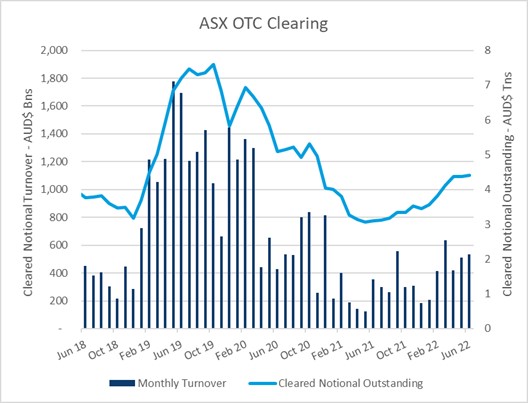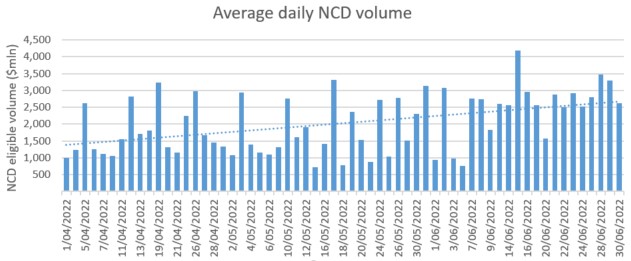OTC swap volumes
Global AUD OTC swap volumes maintained their increased levels in Q2 2022 vs Q1 2022 as a result of continued increases in shorter-dated interest rate swap and OIS volumes. ASX’s OTC Clearing service has recorded total notional cleared of A$1.46Trn in Q2 2022, up 136% vs pcp.
Continued growth in longer dated swaps: ASX has grown its activity and market share in longer dated interest rate swaps, with Weighted Average Maturity of ASX Cleared Interest Rate Swaps currently at 2.02 years. This continues to be above the long running average for the service, despite the recent growth in shorter dated swaps with market participants taking advantage of ASX’s lower total cost of clearing and the available cross-margining offsets (average 50% cross-margining benefit across users of ASX’s Margin Optimisation service).
ASX implements global standard OTC fallback rate provisions and OTC product enhancements: On 27 June 2022, ASX implemented changes to the ASX Clear (Futures) OTC Rules and Handbook; and its OTC Clearing Platform to:
- implement globally standardised benchmark fallback rate provisions in relation to the OTC interest rate derivatives products cleared by ASX.
- introduce OTC product enhancements to support the Actual/Actual ICMA Day Count Convention for the clearing of Assets Swaps and the IMM AUD roll convention, the industry convention to enable swaps to roll on ASX’s bank bill futures dates.
- A copy of the formal market notice published by ASX is available here.




